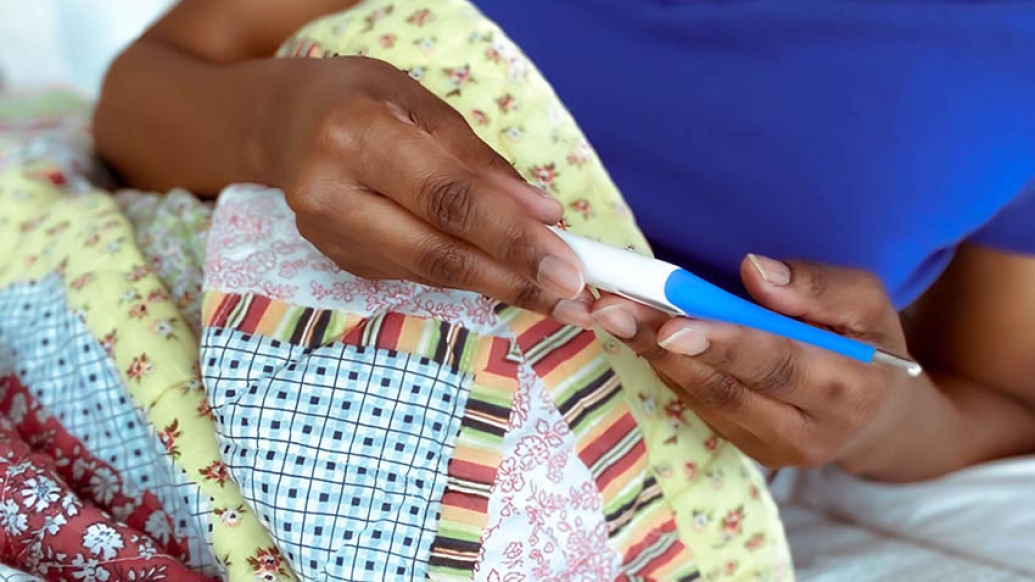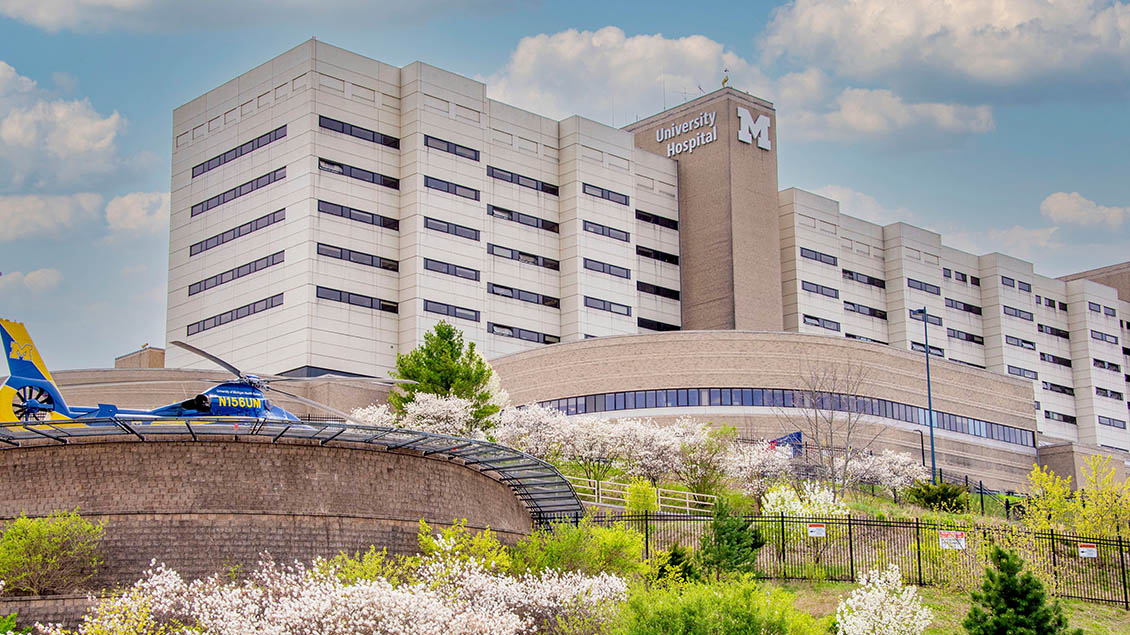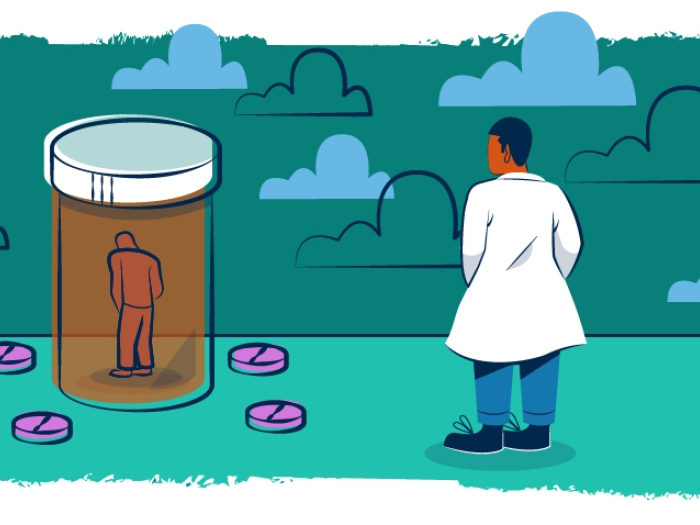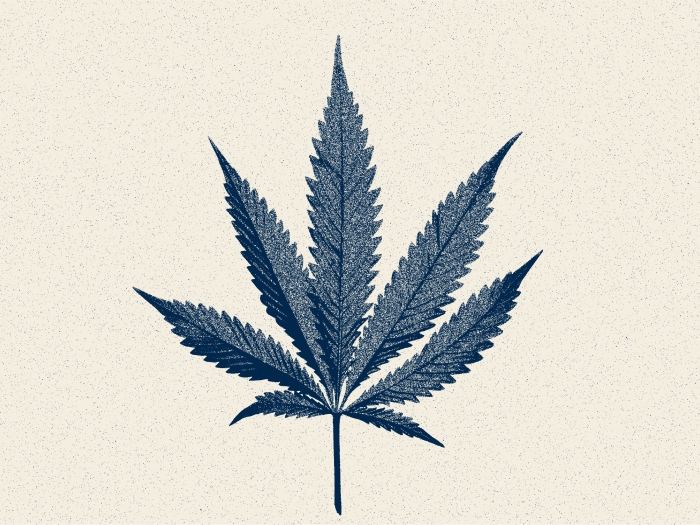A startling and disproportionate death rate among black Americans around the country from COVID-19 is revealing persistent inequities and the need for solutions to address them.
11:30 AM
Authors |

As the COVID-19 pandemic plays out, researchers are looking for clues about why the disease causes such disparate outcomes, from people with no symptoms to people dying within a matter of days. But a startling and disproportionate death rate among black Americans around the country is revealing persistent inequities.
"In Michigan, over 40% of COVID-19 deaths are African Americans, while only 14% of the population is made up of African Americans. This is significant, and these numbers are changing every single day," says David J. Brown, M.D., associate vice president and associate dean for health equity and inclusion at Michigan Medicine.
According to Brown, the reasons behind these unsettling findings are a complex disparity ecosystem, but this is just the latest example in a long history of systemic inequities faced by black Americans in the United States.
While it is true that blacks have higher rates of hypertension, diabetes and obesity, all risk factors for worse outcomes from COVID-19, "I think public health practitioners would say it's not the fact that they have these diseases that's causing the higher death rate because people of all races, classes and creed have these diseases," says Melissa Creary, Ph.D., assistant professor of health management and policy at the U-M School of Public Health. "It's the fact that we see an undeniable burden of disease in the black population. It's this disproportionate amount that is worrisome. The underlying issue to why we see so many is actually attributed to structural inequity."
For example, for a novel infectious disease such as COVID-19, reducing exposure is key to reducing infection rate. This fact serves as the rationale behind stay-at-home and social distancing orders to help ease the burden on the population and the health care system. However, not everyone can stay home and still work.
"Many black and brown people are known to have lower median incomes which lessens the chance of an economic cushion during these uncertain times. Many can't afford to not work, or are on the front lines in jobs such as grocery clerks, janitors, or bus and train operators. Many rely on public transportation and are experiencing forced exposure," says Creary. "Economics influences these decisions. It's not about the body itself, but the societal situation in which the body is embedded."
"Historically, groups that have been marginalized by race/ethnicity have also been oppressed by discriminatory practices which have resulted in pervasive structural and institutional practices that have further negatively affected these groups," says Adrianne Haggins, M.D., assistant professor of emergency medicine and a member of the U-M Institute for Healthcare Policy and Innovation.
She notes that black Americans experience a disproportionate share of environmental risk factors, and are more likely to have limited economic and educational opportunities, food insecurity and poor access to health care.
"This is the persistent backdrop that has plagued communities of color, and the recent COVID-19 pandemic likely created an extraordinary stress on an already dysfunctional, ill-equipped health system serving these communities," she says.
Like Podcasts? Add the Michigan Medicine News Break to your Alexa-enabled device or subscribe for updates on iTunes, Google Play and Stitcher.
As for internet theories about COVID-19 disparities being due to some shared underlying genetic factor or a lack of vitamin D, Arline Geronimus, Sc.D., professor of health behavior and health education at the U-M School of Public Health, is skeptical.
"It's completely implausible that there's one single factor that explains these major differences across populations."
Geronimus coined and has studied the "weathering hypothesis", which describes what happens to black people's bodies across body systems and down to the cellular level from living in a racist society. The sustained high effort coping with environmental, psychosocial, and material stressors over years and decades and across generations that blacks must engage and endure in a racist system leads to cellular damage and accelerated biological aging, resulting in high prevalence and early onset of chronic diseases and increased vulnerability to the worst impacts of infectious disease. She hypothesizes that weathering of the immune system could be contributing to more serious illness in these populations, even across socioeconomic lines.
"In medical school, when they teach you how to diagnose illness, they say when you hear hoof beats, think horses not zebras. Weathering is the horses and, while complex, is really right in front of our faces; there's no need to start speculating about an out-sized role of vitamin D deficiency or single genes" she says.
Addressing inequality
To address this inequality, Michigan's Governor Gretchen Whitmer launched an effort to study these effects via a Community Action Task Force, of which Brown is a member.
MORE FROM THE LAB: Subscribe to our weekly newsletter
"While we know that COVID-19 doesn't discriminate by race, this pandemic certainly has highlighted the racial disparities within our society, as it disproportionately impacts communities of color," says Brown. "This task force is crucial as we search for solutions for these inequities."
Michigan Medicine also assembled a Racial Disparities Advisory Committee to collect insight and experiences from health care providers within the health system.
"Ultimately, it will take careful and thoughtful research disaggregated by race and ethnicity to examine the factors that drive the disparities in outcomes seen with COVID-19," says Haggins.
"Billing data and chart review may provide a glimpse into differentiating factors, but this must be coupled with hearing the voices of African-American and other minority survivors and/or their family members to illuminate the experiences of these groups, in order to better understand their health care experiences and uncover the shortcomings of our health system response, and inform better outreach strategies for these vulnerable groups."
Creary hopes that the efforts to understand disparities in light of COVID-19 will lead to societal changes, but notes that historically, this hasn't been the case.
"I'm really concerned that as this crisis moves into the future, when we're thinking about vaccine distribution and other areas of care and treatment and what it might look like after we flatten the curve and are left with the aftermath. History warns us that a sustained linkage to vulnerable populations could result in eventual divestment as opposed to an investment into the lives of these populations post pandemic."

Explore a variety of healthcare news & stories by visiting the Health Lab home page for more articles.

Department of Communication at Michigan Medicine
Want top health & research news weekly? Sign up for Health Lab’s newsletters today!





